
Internal Audit Evaluation
So, is it time to evaluate your internal audit function? The answer is a resounding yes. In a landscape fraught with complexities and uncertainties, a robust internal audit function isn't a luxury—it's a necessity.

So, is it time to evaluate your internal audit function? The answer is a resounding yes. In a landscape fraught with complexities and uncertainties, a robust internal audit function isn't a luxury—it's a necessity.

The Grosvenor Better Governance DIY Toolkit is an easy to use, logical toolkit of guidance and practical checklists to ensure conformance and compliance while driving performance.
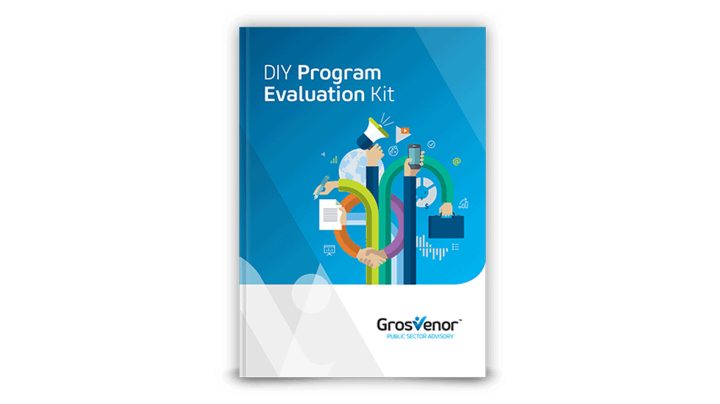
This kit was produced to give Program Managers an easy to read and understand guide. We explain the principles while walking you through an example program that demonstrates how to apply the techniques in practice

An integral part of understanding how well your program has performed is having a monitoring and evaluation framework (M&E framework) and applying it to the specific context of your program.
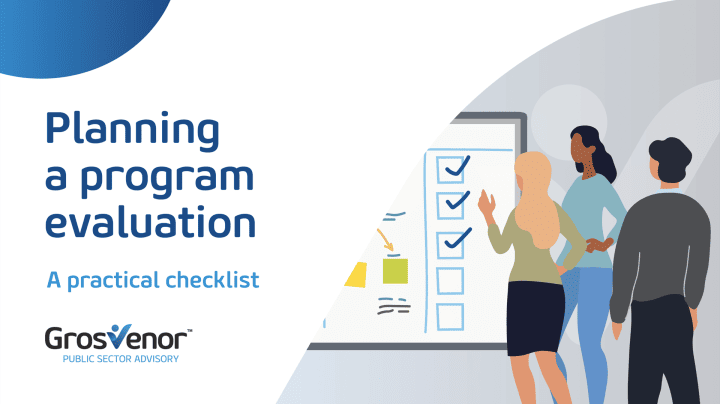
The Evaluation Planning Checklist serves as a practical tool that summarises and organises the various aspects that should be considered when establishing a sound and structured program evaluation.
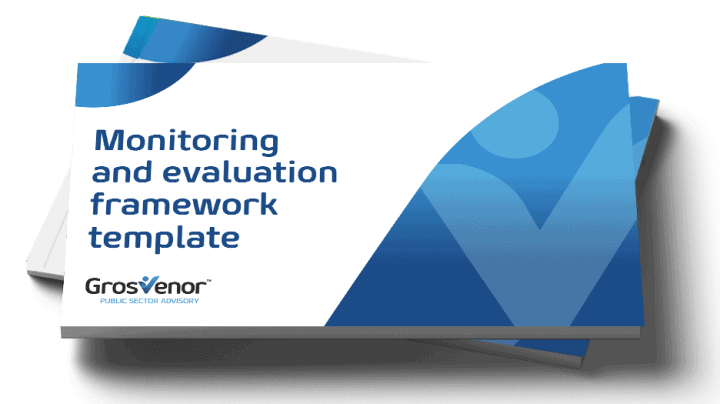
An easy to use, interactive, fill it in as you go, template to help you develop your M&E Framework.

Corporate Services functions are responsible for delivering vital infrastructure and services that enable performance of their organisation’s core business functions. They play a crucial role in ensuring that the organisation’s workforce is trained, retained and supported, financial operations are sound, legal and compliance issues are managed, technology systems are functional and secure, and marketing and communications efforts are effective.
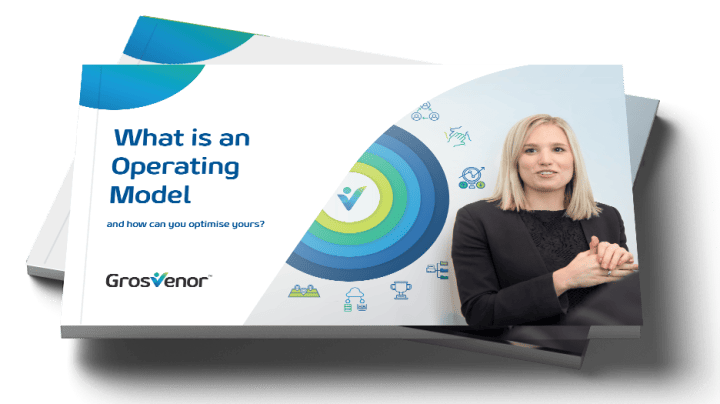
An Operating Model is the blueprint of how an organisation runs its business operations to achieve its strategic objectives and priorities. But why is it important to articulate your Operating Model?
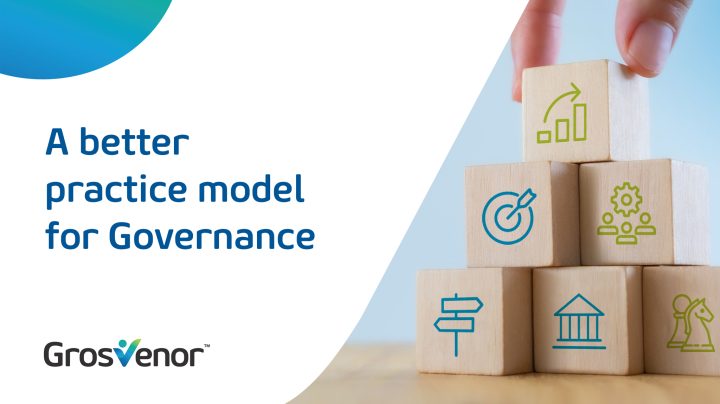
Traditionally, governance is described and measured only in terms of structural elements. Our model contains structural elements and enabling elements that must work together for optimal governance to be achieved and sustainable.

But for many of us, the art of program evaluation can seem a bit of a mystery. What is it and what is it for? More importantly, how do I do it well?

It is very easy to say you need to ‘collect data from a sample’, but what does this really mean? How many people should you be engaging with to collect something meaningful? Question no more! We’ve put together some quick and easy ‘rules of engagement’ to help you understand what your sample size needs to be.
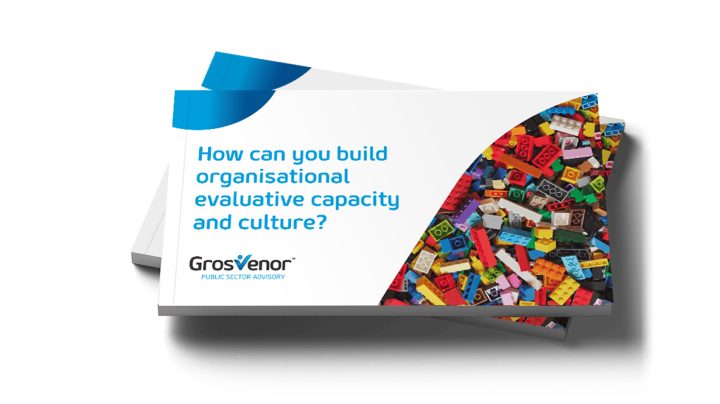
Building evaluation culture is all about shaping the way an organisation thinks and talks about evaluation as a key component to improvement and innovation. Our evaluation maturity model has 10 segments we believe each organization needs to focus on to uplift overall evaluation capability and maturity. The model can be used as a guide in identifying the priority areas to focus on in building evaluation culture and maturity.

And, from now on, with each instance where you feel bending the rules might be necessary, stop, and think…’Could this decision or action I am about to take lead to other decisions or actions others will take? And, if that same decision or action was taken a number of times, or applied to different situations what might the knock-on effect be?

Monitoring and evaluation (M&E) frameworks are often seen as tools for assessing the success of specific programs or projects. But what if we told you that M&E could be used to transform your entire organisation and achieve your goals on a much larger scale?

While there are significant potential benefits of AI for the public sector, there is also a need to proceed with caution where human judgement cannot be replicated (at this point in time) and where there is a lack of quality data.

If you're a program manager for a government entity, you may be spending a lot of your time trying to figure out how to assess your program’s performance in accordance with your organisation’s governance, performance and accountability rules or guidelines.
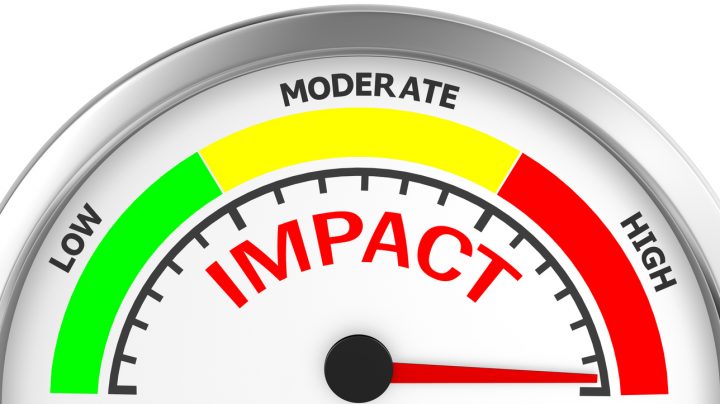
While we’d argue that there has been a marked improvement in the measurement of program and service impacts, challenges still remain when it comes to policy. How to effectively measure the impacts of policy work is a challenging question being faced by evaluators and performance management experts.

It is no secret that social programs are all about the community – whether designing, delivering or evaluating a program we’re all working to improve the lives of, or outcomes for, populations in a particular area or sector. In recognition of this, it is critical that the views of program stakeholders are captured at all stages of the program lifecycle.

The way evaluators develop, test and present recommendations has a huge impact on how improvements will finally manifest (if at all). Good recommendations and improvement opportunities identified during an evaluation are those that can be put into action. To maximise the impact and value of each evaluation, it is critical that program managers aren’t left asking ‘what next’ once the final report is delivered.

Grosvenor has developed a capability framework that can be used to review and assess the evaluative culture of any organisation, learn how you can benefit using our capability model by downloading our guide.
It is a reality that businesses are increasingly using predictive analytics to achieve their outcomes – in marketing, pricing strategies and improving operations. Likewise, governments are also turning to data and AI to develop more timely, targeted and relevant policy for citizens. The increase in data-driven decision making and predictive analytics is palpable.
Poorly designed Program Evaluation questionnaires can lead to wasted time and erode stakeholder confidence. Worse, they can result in faulty data, which can lead to flawed decision-making and have serious impacts on the outcome of a program. This guide will help you appraise your evaluation questionnaires and ensure you’re collecting the right data to truly measure the success of your program.
This tool is intended for: ‘unpacking’ program objectives or outcomes and determining the data requirements for monitoring and evaluation of the program against its outcomes. The tool can be used to focus on just one, or both, of the aims described above.
In the ideal evaluation world, an evaluation occurs in the context of a beautifully planned and executed monitoring and evaluation framework. You have time and resources and oodles of beautiful, relevant, high quality data to inform your evaluation…… But who lives in this ideal world? Oftentimes, you are notified late of the requirement, there’s a tight budget and timeframe, and for the final kicker…. you have no data.
Divisional and Branch level Business Plans are not currently a regulatory requirement within the Commonwealth, but this does not mean that they are not important. Such plans are critical to tell an organisations complete and sound performance story. While Corporate Plans are supposed to cover performance measurement from the strategic outcome level, this is often miles away from the work of each branch and team. Ascertaining how an individual or team’s work and performance links to the Corporate Plan requires some serious mental gymnastics. Business Plans are designed to bridge this divide, helping teams and individual staff members to establish and understand ‘where do I fit (with my work) into the picture’.
Is your Corporate Plan compliant with PGPA Rule 16EA (Performance measures for Commonwealth entities) and better practice? To assist you in your assessment, we have provided a selection of Grosvenor’s better practice criteria for Section 16EA in an interactive document.
Reviewing your Corporate Plan may not be at the top of your priority list or at least not something welcomed with open arms.
But now is the time to write/overhaul your Corporate Plan and make it fit-for-purpose for 2022/2023. This will not only help you meet regulatory requirements, but also bring it to the next maturity level of your organisation’s performance culture and management capabilities.
There are many different types of crises: natural and human-made disasters, political scandals, terrorism attacks, commercial collapses, global health emergencies. Some crises arrive swiftly, undetected, catching us off-guard. Others we can see coming from a long way off, yet are powerless to avoid them.
The public sector exists in an atmosphere dominated by change. Regular changes to policy, rapid development of information and knowledge management capabilities and increasing expectations of the public enforce the notion that change is an inherent characteristic of public sector organisations.
Many organisations are facing this, sometimes controversial, question right now. For example, the Federal Department of Human Services is, very publicly, trying to grapple with this question in testing opportunities for outsourcing some or all of its back-of-house processing and payment functions.
More and more, large private sector organisations are making the successful change to flexible workplaces, providing Public Sector property managers with compelling case studies on how to improve the effectiveness of their own workspaces
Every day, organisations communicate with a wide range of internal and external stakeholders in every aspect of their operations. However, when analysing our clients’ stakeholder engagement approaches, it becomes evident that efforts to engage with stakeholders often occur in an ad-hoc and rather visceral manner.
A program logic is simply a graphical portrayal of your theory that is succinct and easy to understand. Your program logic can take the form of words, diagrams, tables, or a combination of all three. Program logics are often (but not always) captured in one page, and are typically divided into inputs, outputs and outcomes.
This tool is intended for: ‘unpacking’ program objectives or outcomes and determining the data requirements for monitoring and evaluation of the program against its outcomes. The tool can be used to focus on just one, or both, of the aims described above.
If you’re a program manager for a government entity, you may be spending a lot of your time trying to figure out how to assess your program’s performance in accordance with your organisation’s governance, performance and accountability rules or guidelines.
Are you ready to evaluate? These are the five questions that you need to ask yourself to assess whether you are ready to evaluate: What – What is the background and context of the program and what will be the use of information and evaluation outcomes? Why – Why are you conducting the evaluation and why this point in time? How – Will this be an internal or external evaluation and what time and resources will you need? When – What are the timeframes for conducting the evaluation activities including milestones and deliverables? You – Do you have the right…
Building evaluation culture is all about shaping the way an organisation thinks and talks about evaluation as a key component to improvement and innovation. Our evaluation maturity model has 10 segments we believe each organization needs to focus on to uplift overall evaluation capability and maturity. The model can be used as a guide in identifying the priority areas to focus on in building evaluation culture and maturity.
It is very easy to say you need to ‘collect data from a sample’, but what does this really mean? How many people should you be engaging with to collect something meaningful? Question no more! We’ve put together some quick and easy ‘rules of engagement’ to help you understand what your sample size needs to be.
While we’d argue that there has been a marked improvement in the measurement of program and service impacts, challenges still remain when it comes to policy. How to effectively measure the impacts of policy work is a challenging question being faced by evaluators and performance management experts.
It is no secret that social programs are all about the community – whether designing, delivering or evaluating a program we’re all working to improve the lives of, or outcomes for, populations in a particular area or sector. In recognition of this, it is critical that the views of program stakeholders are captured at all stages of the program lifecycle.
The way evaluators develop, test and present recommendations has a huge impact on how improvements will finally manifest (if at all). Good recommendations and improvement opportunities identified during an evaluation are those that can be put into action. To maximise the impact and value of each evaluation, it is critical that program managers aren’t left asking ‘what next’ once the final report is delivered.
It’s easy to fall into the trap of thinking the evaluators’ job is over once the final report is submitted. In terms of the adoption of improvement opportunities and application of findings, this is basically akin to an evaluator saying “Over to you now! Good luck!”. The evaluator’s job is not over once the final report is submitted!
It is a reality that businesses are increasingly using predictive analytics to achieve their outcomes – in marketing, pricing strategies and improving operations. Likewise, governments are also turning to data and AI to develop more timely, targeted and relevant policy for citizens. The increase in data-driven decision making and predictive analytics is palpable.
How will decisions get made? Who is ultimately responsible? There’s a lot to think about. Fortunately, there are multiple things you can do to simplify and bring clarity to this process, ensuring that your decision making is both efficient and effective (it’s a win-win!).
Being asked to manage a new, or existing, program can seem overwhelming. To help you navigate the world of program management, Grosvenor Public Sector Advisory has developed a series of articles to break down the key activities and tasks you can implement to make your life easier.
“Tracking, monitoring and managing the skills and capabilities of the workforce can be problematic, especially with a view to positioning the workforce for the nature and types of future work.”Do any of the five statements below sound familiar in your agency? If so, you are not alone. Most government agencies are grappling with these exact problems when trying to address the future of work.
Every day, organisations communicate with a wide range of internal and external stakeholders in every aspect of their operations. However, when analysing our clients’ stakeholder engagement approaches, it becomes evident that efforts to engage with stakeholders often occur in an ad-hoc and rather visceral manner.
A program logic is simply a graphical portrayal of your theory that is succinct and easy to understand. Your program logic can take the form of words, diagrams, tables, or a combination of all three. Program logics are often (but not always) captured in one page, and are typically divided into inputs, outputs and outcomes.
Poorly designed Program Evaluation questionnaires can lead to wasted time and erode stakeholder confidence. Worse, they can result in faulty data, which can lead to flawed decision-making and have serious impacts on the outcome of a program. This guide will help you appraise your evaluation questionnaires and ensure you’re collecting the right data to truly measure the success of your program.
This tool is intended for: ‘unpacking’ program objectives or outcomes and determining the data requirements for monitoring and evaluation of the program against its outcomes. The tool can be used to focus on just one, or both, of the aims described above.
In the ideal evaluation world, an evaluation occurs in the context of a beautifully planned and executed monitoring and evaluation framework. You have time and resources and oodles of beautiful, relevant, high quality data to inform your evaluation…… But who lives in this ideal world? Oftentimes, you are notified late of the requirement, there’s a tight budget and timeframe, and for the final kicker…. you have no data.
Have you ever noticed how hard it can be to articulate to others exactly what your program is for, and how it works? And how hard it can sometimes be to get internal buy-in and support as a result? In this blog, we show you how to develop a watertight program theory and program logic.
Program evaluation can be daunting for program managers approaching it for the first time. Rather than being given clear guidance on the how-to’s of program evaluation, newcomers are often expected to deduce program evaluation techniques from dry academic texts hidden behind a wall of baffling jargon.
If you’re a program manager for a government entity, you may be spending a lot of your time trying to figure out how to assess your program’s performance in accordance with your organisation’s governance, performance and accountability rules or guidelines.
While program evaluation might seem a little scary, it actually presents a raft of exciting opportunities for program managers to showcase the successes of their programs and ensure that their teams are performing to its full potential
Grosvenor undertakes an annual study into the state of governance in Australia. We see this as part of our contribution to the governance profession and we share our insights and knowledge through speaking engagements. In this annual study, we look at the maturity levels of governance in Australian organisations and identify governance strengths and opportunities for improvement.
Developing a business plan template is a structured process that involves outlining key components to guide the development of a comprehensive and well-organised document. Here’s a general guide on how to create a business plan template, and how it can benefit any Australian business or government entity. Business Plan Template Development Executive Summary Briefly summarise the key elements of the business plan. Include the business name, mission statement, founders, location, and a snapshot of financial projections. Business Description Provide an overview of the business, its purpose, and the problem it solves. Outline the products or services offered. Market Analysis Define…
Corporate Services functions are responsible for delivering vital infrastructure and services that enable performance of their organisation’s core business functions. They play a crucial role in ensuring that the organisation’s workforce is trained, retained and supported, financial operations are sound, legal and compliance issues are managed, technology systems are functional and secure, and marketing and communications efforts are effective.
And, from now on, with each instance where you feel bending the rules might be necessary, stop, and think…’Could this decision or action I am about to take lead to other decisions or actions others will take? And, if that same decision or action was taken a number of times, or applied to different situations what might the knock-on effect be?
Divisional and Branch level Business Plans are not currently a regulatory requirement within the Commonwealth, but this does not mean that they are not important. Such plans are critical to tell an organisations complete and sound performance story. While Corporate Plans are supposed to cover performance measurement from the strategic outcome level, this is often miles away from the work of each branch and team. Ascertaining how an individual or team’s work and performance links to the Corporate Plan requires some serious mental gymnastics. Business Plans are designed to bridge this divide, helping teams and individual staff members to establish and understand ‘where do I fit (with my work) into the picture’.
Organisational redesign is far more than calculating the right number of FTE ‘boxes’ and identifying reporting lines ‘lines’. Whilst that may make it clear who to turn to when you need a remuneration review, it does little to address requirements for workforce and employee wellbeing and sustainability; connection, collaboration and collegiality; talent acquisition and capability development; compliance; and continued improvement and evolution of services and outcomes. Ultimately, these are the factors that will determine your capacity to achieve your mission and strategic priorities.
While we’d argue that there has been a marked improvement in the measurement of program and service impacts, challenges still remain when it comes to policy. How to effectively measure the impacts of policy work is a challenging question being faced by evaluators and performance management experts.
Reviewing your Corporate Plan may not be at the top of your priority list or at least not something welcomed with open arms.
But now is the time to write/overhaul your Corporate Plan and make it fit-for-purpose for 2022/2023. This will not only help you meet regulatory requirements, but also bring it to the next maturity level of your organisation’s performance culture and management capabilities.
There are many different types of crises: natural and human-made disasters, political scandals, terrorism attacks, commercial collapses, global health emergencies. Some crises arrive swiftly, undetected, catching us off-guard. Others we can see coming from a long way off, yet are powerless to avoid them.
Being asked to manage a new, or existing, program can seem overwhelming. To help you navigate the world of program management, Grosvenor Public Sector Advisory has developed a series of articles to break down the key activities and tasks you can implement to make your life easier.
The public sector exists in an atmosphere dominated by change. Regular changes to policy, rapid development of information and knowledge management capabilities and increasing expectations of the public enforce the notion that change is an inherent characteristic of public sector organisations.
All contracts present financial and operational risks. One of the contract manager’s most important responsibilities is to manage the inherent risks and minimise negative impacts while positioning the organisation to take best advantage of opportunities. Learn why failure to have a Risk Management Plan in place is risky business.
Many organisations are facing this, sometimes controversial, question right now. For example, the Federal Department of Human Services is, very publicly, trying to grapple with this question in testing opportunities for outsourcing some or all of its back-of-house processing and payment functions.
More and more, large private sector organisations are making the successful change to flexible workplaces, providing Public Sector property managers with compelling case studies on how to improve the effectiveness of their own workspaces
There have been a number of governance failings in Australian government organisations recently. These were different cases but both ultimately with the same outcome – the fraud of taxpayers and loss of community faith in those organisations.
A persona is a fictional character, designed to represent a user or client type. Personas are used to generate deeper understanding of your users’ or clients’ needs, experiences and motivations. Use the template to generate a list of questions and to capture your personas.
Have you ever noticed how hard it can be to articulate to others exactly what your program is for, and how it works? And how hard it can sometimes be to get internal buy-in and support as a result? In this blog, we show you how to develop a watertight program theory and program logic.
There are many different types of crises: natural and human-made disasters, political scandals, terrorism attacks, commercial collapses, global health emergencies. Some crises arrive swiftly, undetected, catching us off-guard. Others we can see coming from a long way off, yet are powerless to avoid them.
Join Associate Director of Grosvenor, Charitee Davies, for a ‘Fireside Chat’ at BiiG 2019, held in Brisbane. Discussing the future of work, and highlighting the importance of address a growing skills gap, as well as our understanding of the current trends in the current workforce, and how this will impact workplaces in the future.
Many organisations are facing this, sometimes controversial, question right now. For example, the Federal Department of Human Services is, very publicly, trying to grapple with this question in testing opportunities for outsourcing some or all of its back-of-house processing and payment functions.
Every day, organisations communicate with a wide range of internal and external stakeholders in every aspect of their operations. However, when analysing our clients’ stakeholder engagement approaches, it becomes evident that efforts to engage with stakeholders often occur in an ad-hoc and rather visceral manner.
Grosvenor undertakes an annual study into the state of governance in Australia. We see this as part of our contribution to the governance profession and we share our insights and knowledge through speaking engagements. In this annual study, we look at the maturity levels of governance in Australian organisations and identify governance strengths and opportunities for improvement.
Developing a business plan template is a structured process that involves outlining key components to guide the development of a comprehensive and well-organised document. Here’s a general guide on how to create a business plan template, and how it can benefit any Australian business or government entity. Business Plan Template Development Executive Summary Briefly summarise the key elements of the business plan. Include the business name, mission statement, founders, location, and a snapshot of financial projections. Business Description Provide an overview of the business, its purpose, and the problem it solves. Outline the products or services offered. Market Analysis Define…
Are you ready to evaluate? These are the five questions that you need to ask yourself to assess whether you are ready to evaluate: What – What is the background and context of the program and what will be the use of information and evaluation outcomes? Why – Why are you conducting the evaluation and why this point in time? How – Will this be an internal or external evaluation and what time and resources will you need? When – What are the timeframes for conducting the evaluation activities including milestones and deliverables? You – Do you have the right…
Corporate Services functions are responsible for delivering vital infrastructure and services that enable performance of their organisation’s core business functions. They play a crucial role in ensuring that the organisation’s workforce is trained, retained and supported, financial operations are sound, legal and compliance issues are managed, technology systems are functional and secure, and marketing and communications efforts are effective.
And, from now on, with each instance where you feel bending the rules might be necessary, stop, and think…’Could this decision or action I am about to take lead to other decisions or actions others will take? And, if that same decision or action was taken a number of times, or applied to different situations what might the knock-on effect be?
Building evaluation culture is all about shaping the way an organisation thinks and talks about evaluation as a key component to improvement and innovation. Our evaluation maturity model has 10 segments we believe each organization needs to focus on to uplift overall evaluation capability and maturity. The model can be used as a guide in identifying the priority areas to focus on in building evaluation culture and maturity.
It is very easy to say you need to ‘collect data from a sample’, but what does this really mean? How many people should you be engaging with to collect something meaningful? Question no more! We’ve put together some quick and easy ‘rules of engagement’ to help you understand what your sample size needs to be.
Divisional and Branch level Business Plans are not currently a regulatory requirement within the Commonwealth, but this does not mean that they are not important. Such plans are critical to tell an organisations complete and sound performance story. While Corporate Plans are supposed to cover performance measurement from the strategic outcome level, this is often miles away from the work of each branch and team. Ascertaining how an individual or team’s work and performance links to the Corporate Plan requires some serious mental gymnastics. Business Plans are designed to bridge this divide, helping teams and individual staff members to establish and understand ‘where do I fit (with my work) into the picture’.
What does Married at First Sight teach us about public policy?
The good news is that you don’t need to marry risk. Assessing risk is a valuable and integral tool to delivering effective policy. Don’t let it get carried away with itself (like the contestants on the show).
Organisational redesign is far more than calculating the right number of FTE ‘boxes’ and identifying reporting lines ‘lines’. Whilst that may make it clear who to turn to when you need a remuneration review, it does little to address requirements for workforce and employee wellbeing and sustainability; connection, collaboration and collegiality; talent acquisition and capability development; compliance; and continued improvement and evolution of services and outcomes. Ultimately, these are the factors that will determine your capacity to achieve your mission and strategic priorities.
Is your Corporate Plan compliant with PGPA Rule 16EA (Performance measures for Commonwealth entities) and better practice? To assist you in your assessment, we have provided a selection of Grosvenor’s better practice criteria for Section 16EA in an interactive document.
While we’d argue that there has been a marked improvement in the measurement of program and service impacts, challenges still remain when it comes to policy. How to effectively measure the impacts of policy work is a challenging question being faced by evaluators and performance management experts.
It is no secret that social programs are all about the community – whether designing, delivering or evaluating a program we’re all working to improve the lives of, or outcomes for, populations in a particular area or sector. In recognition of this, it is critical that the views of program stakeholders are captured at all stages of the program lifecycle.
Reviewing your Corporate Plan may not be at the top of your priority list or at least not something welcomed with open arms.
But now is the time to write/overhaul your Corporate Plan and make it fit-for-purpose for 2022/2023. This will not only help you meet regulatory requirements, but also bring it to the next maturity level of your organisation’s performance culture and management capabilities.
There are many different types of crises: natural and human-made disasters, political scandals, terrorism attacks, commercial collapses, global health emergencies. Some crises arrive swiftly, undetected, catching us off-guard. Others we can see coming from a long way off, yet are powerless to avoid them.
The way evaluators develop, test and present recommendations has a huge impact on how improvements will finally manifest (if at all). Good recommendations and improvement opportunities identified during an evaluation are those that can be put into action. To maximise the impact and value of each evaluation, it is critical that program managers aren’t left asking ‘what next’ once the final report is delivered.
It’s easy to fall into the trap of thinking the evaluators’ job is over once the final report is submitted. In terms of the adoption of improvement opportunities and application of findings, this is basically akin to an evaluator saying “Over to you now! Good luck!”. The evaluator’s job is not over once the final report is submitted!
It is a reality that businesses are increasingly using predictive analytics to achieve their outcomes – in marketing, pricing strategies and improving operations. Likewise, governments are also turning to data and AI to develop more timely, targeted and relevant policy for citizens. The increase in data-driven decision making and predictive analytics is palpable.
How will decisions get made? Who is ultimately responsible? There’s a lot to think about. Fortunately, there are multiple things you can do to simplify and bring clarity to this process, ensuring that your decision making is both efficient and effective (it’s a win-win!).
Join Associate Director of Grosvenor, Charitee Davies, for a ‘Fireside Chat’ at BiiG 2019, held in Brisbane. Discussing the future of work, and highlighting the importance of address a growing skills gap, as well as our understanding of the current trends in the current workforce, and how this will impact workplaces in the future.
Being asked to manage a new, or existing, program can seem overwhelming. To help you navigate the world of program management, Grosvenor Public Sector Advisory has developed a series of articles to break down the key activities and tasks you can implement to make your life easier.
“Tracking, monitoring and managing the skills and capabilities of the workforce can be problematic, especially with a view to positioning the workforce for the nature and types of future work.”Do any of the five statements below sound familiar in your agency? If so, you are not alone. Most government agencies are grappling with these exact problems when trying to address the future of work.
The public sector exists in an atmosphere dominated by change. Regular changes to policy, rapid development of information and knowledge management capabilities and increasing expectations of the public enforce the notion that change is an inherent characteristic of public sector organisations.
All contracts present financial and operational risks. One of the contract manager’s most important responsibilities is to manage the inherent risks and minimise negative impacts while positioning the organisation to take best advantage of opportunities. Learn why failure to have a Risk Management Plan in place is risky business.
Many organisations are facing this, sometimes controversial, question right now. For example, the Federal Department of Human Services is, very publicly, trying to grapple with this question in testing opportunities for outsourcing some or all of its back-of-house processing and payment functions.
More and more, large private sector organisations are making the successful change to flexible workplaces, providing Public Sector property managers with compelling case studies on how to improve the effectiveness of their own workspaces
There have been a number of governance failings in Australian government organisations recently. These were different cases but both ultimately with the same outcome – the fraud of taxpayers and loss of community faith in those organisations.
Every day, organisations communicate with a wide range of internal and external stakeholders in every aspect of their operations. However, when analysing our clients’ stakeholder engagement approaches, it becomes evident that efforts to engage with stakeholders often occur in an ad-hoc and rather visceral manner.
A program logic is simply a graphical portrayal of your theory that is succinct and easy to understand. Your program logic can take the form of words, diagrams, tables, or a combination of all three. Program logics are often (but not always) captured in one page, and are typically divided into inputs, outputs and outcomes.
A persona is a fictional character, designed to represent a user or client type. Personas are used to generate deeper understanding of your users’ or clients’ needs, experiences and motivations. Use the template to generate a list of questions and to capture your personas.
Poorly designed Program Evaluation questionnaires can lead to wasted time and erode stakeholder confidence. Worse, they can result in faulty data, which can lead to flawed decision-making and have serious impacts on the outcome of a program. This guide will help you appraise your evaluation questionnaires and ensure you’re collecting the right data to truly measure the success of your program.
This tool is intended for: ‘unpacking’ program objectives or outcomes and determining the data requirements for monitoring and evaluation of the program against its outcomes. The tool can be used to focus on just one, or both, of the aims described above.
In the ideal evaluation world, an evaluation occurs in the context of a beautifully planned and executed monitoring and evaluation framework. You have time and resources and oodles of beautiful, relevant, high quality data to inform your evaluation…… But who lives in this ideal world? Oftentimes, you are notified late of the requirement, there’s a tight budget and timeframe, and for the final kicker…. you have no data.
Have you ever noticed how hard it can be to articulate to others exactly what your program is for, and how it works? And how hard it can sometimes be to get internal buy-in and support as a result? In this blog, we show you how to develop a watertight program theory and program logic.
Program evaluation can be daunting for program managers approaching it for the first time. Rather than being given clear guidance on the how-to’s of program evaluation, newcomers are often expected to deduce program evaluation techniques from dry academic texts hidden behind a wall of baffling jargon.
If you’re a program manager for a government entity, you may be spending a lot of your time trying to figure out how to assess your program’s performance in accordance with your organisation’s governance, performance and accountability rules or guidelines.
While program evaluation might seem a little scary, it actually presents a raft of exciting opportunities for program managers to showcase the successes of their programs and ensure that their teams are performing to its full potential